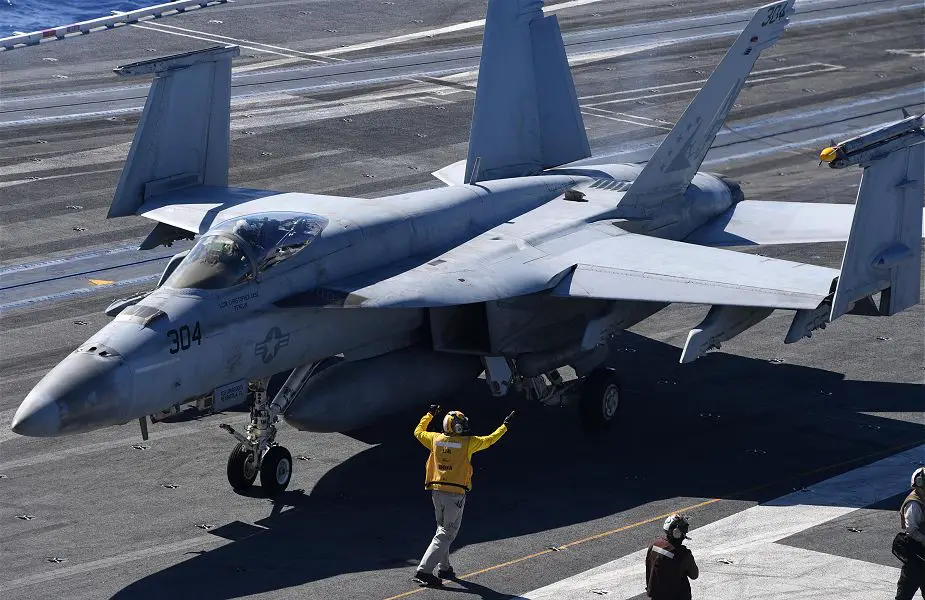US navy has taken delivery of final Block II Super Hornet aircraft
Since 2005, F/A-18 Super Hornet Block II aircraft have been rolling off Boeing’s production line and serving as the U.S. Navy’s multi-mission capable workhorse. The service took delivery of the final Block II Super Hornet, closing out a run of 322 one-seater F/A-18Es and 286 two-seated F/A-18Fs, on April 17, 2020.
 A Sailor aboard the aircraft carrier USS Ronald Reagan (CVN 76) directs an F/A-18E/F Super Hornet assigned to the "Eagles" of Strike Fighter Squadron (VFA) 115 to turn on the ship's flight deck. (Picture source U.S. Navy)
A Sailor aboard the aircraft carrier USS Ronald Reagan (CVN 76) directs an F/A-18E/F Super Hornet assigned to the "Eagles" of Strike Fighter Squadron (VFA) 115 to turn on the ship's flight deck. (Picture source U.S. Navy)
The US Navy F/A-18 E and F Super Hornet maritime strike attack aircraft, manufactured by Boeing, flew for the first time on November 29, 1995. The Block II Super Hornet incorporates an improved active electronically scanned array (AESA) radar, larger displays, the joint helmet mounted cuing system, and several other avionics replacements. Avionics and weapons systems that were under development for the prospective production version of the Boeing X-32 were used on the Block II Super Hornet. New-build aircraft received the APG-79 AESA radar beginning in 2005. In January 2008, it was announced that 135 earlier production aircraft were to be retrofitted with AESA radars.
The robust airframe was built with an open mission systems architecture, which has enabled easy integration of new weapons and technologies. The Block II Super Hornet serves as the Navy’s responsive aircraft, fully capable across the full mission spectrum which includes: air superiority, fighter escort, reconnaissance, aerial refueling, close air support, air defense suppression, and day/night precision strike.
This aircraft has stood strong as the backbone of the Navy’s carrier air wing, and has proven itself repeatedly during numerous operations where it has been the preeminent platform performing multiple missions, sometimes rapidly reconfiguring on the fly.
Even though it is substantially larger – roughly 7,000 pounds heavier and a 50 percent higher range, the Super Hornet delivered with fewer parts and lower maintenance demands than its predecessor, the Hornet.
The proven capabilities and successes of the Block II program were leveraged by the Navy in awarding a multi-year procurement contract for Block III Super Hornets to Boeing in March 2019, totaling approximately $4 billion. The Navy will procure 72 Block III Super Hornet aircraft between fiscal years 2019 and 2021, while realizing more efficient production rates and providing the supporting industrial base with stability and advantages in production and spares planning.
Boeing is expected to deliver the Block III test jets to the Navy as early as late spring, where subsequent testing will commence at both NAS Patuxent River and Naval Air Weapons System (NAWS) China Lake. This latest version of the Super Hornet includes an advanced cockpit system; advanced network infrastructure; reduced radar cross-section; and a 10,000-flight hour lifespan.



Ingen kommentarer:
Legg inn en kommentar
Merk: Bare medlemmer av denne bloggen kan legge inn en kommentar.